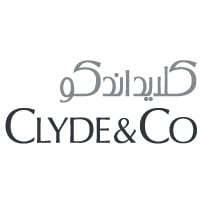

General Counsel and Board Secretary | Yanbu Aramco Sinopec Refining Company (YASREF)



Saad AL Juhani
General Counsel and Board Secretary | Yanbu Aramco Sinopec Refining Company (YASREF)
Career Biography
I am currently serving as General Counsel and Board Secretary at Yanbu Aramco Sinopec Refining Company (YASREF), where I lead the company’s legal, corporate governance, and board affairs functions. Over the past several years, I have been fortunate to work at the intersection of law, strategy, and execution on matters that are central to Saudi Arabia’s downstream industrial development.
My legal career has spanned private practice and in-house roles, but the most rewarding phase has been supporting large-scale energy joint ventures, where legal complexity meets business ambition. At YASREF, I’ve had the opportunity to lead and oversee a wide range of legal initiatives, from high-value commercial transactions and joint venture governance to regulatory compliance, board structuring, and executive decision-making frameworks.
One of the most defining contributions in the past year has been my involvement in the legal structuring and negotiation of a major Venture Framework Agreement between Aramco, Sinopec, and YASREF to support a planned petrochemical expansion. The agreement was publicly announced and recognised as a strategic milestone in Saudi Arabia’s Vision 2030 downstream strategy. My role involved designing the governance model, aligning internal delegation of authority frameworks, and ensuring full shareholder and board-level alignment across jurisdictions.
Beyond transactions, I’ve focused on strengthening the legal function’s strategic role in the company. I led the implementation of a centralised legal workflow system that streamlined request intake, embedded risk-based prioritisation, and introduced transparency through KPIs. We also embedded the IRAC method into our internal advice process, bringing more structure and clarity to how legal communicates with the business.
As Board Secretary, I work closely with the Chairman and executive leadership to support board and committee operations, shareholder resolutions, and regulatory disclosures. I consider board governance to be more than just compliance. It is a discipline that safeguards long-term decision-making and shareholder confidence. I have also been involved in mentoring junior legal talent and improving internal processes for contract lifecycle management and legal risk oversight.
I hold degrees in law at both undergraduate and master’s levels and am a Certified Board Director. I have also completed the Leadership in Corporate Counsel program at Harvard, which helped strengthen my approach to strategic thinking and cross-functional collaboration. My approach to legal leadership is grounded in practical decision-making, integrity, and helping the business move forward with clarity and confidence.
Legal is no longer just a gatekeeper. It must be a partner to the business, enabling growth while protecting value. That is the mindset I strive to bring to the table every day.
Team size: 5
What are the most significant cases and/or transactions you have been involved in over the past year?
As Head of Legal and Board Secretary, I played a central role in the legal structuring, governance design, and finalisation of the Venture Framework Agreement (VFA) signed between Aramco, Sinopec, and Yasref for a major petrochemical expansion in Yanbu. This landmark transaction, publicly announced and widely covered in national and international media, is a pivotal milestone in advancing Saudi Arabia’s downstream strategy under Vision 2030. I was a major contributor to the agreement’s legal architecture, including the review and negotiation of core provisions, the design of the Delegation of Authority (DoA) framework, and the integration of the new venture governance with Yasref’s existing corporate structure. A critical part of my role was ensuring alignment across diverse stakeholders, including Aramco, Sinopec, and Yasref’s executive leadership and board representatives, balancing local compliance with international expectations. In addition to managing regulatory and governance clarity, I facilitated internal approvals and ensured board-level oversight was maintained throughout. The complexity, visibility, and strategic scale of this transaction, potentially enabling multi-billion-dollar investments, made it one of the most impactful legal contributions I have led to date.
What innovations have you made to the way your legal team works in the past year?
To modernise our legal operations and reduce reliance on unstructured workpapers, I led the implementation of a centralised legal request and workflow system. This system now serves as the core intake and response tool for all legal support across the organisation. One key enhancement was introducing urgency validation: any request marked as urgent must be formally endorsed by the requestor’s department head. This addressed a recurring challenge where nearly all requests were labeled urgent, overwhelming the legal team and distorting priorities. With this filter in place, we restored discipline, balanced workloads, and improved turnaround times. The system also includes embedded client questionnaires, attachment handling, and KPI tracking, enabling transparent triage and resource allocation. Most notably, we standardised our response framework using the IRAC method (Issue, Rule, Application, Conclusion). This brought consistency and clarity to our legal advice, making it easier for business units to understand the rationale behind decisions and align accordingly.
Based on your experience, what is the key to collaborating successfully with business partners?
Successful collaboration between legal and business functions starts with mutual understanding of roles and objectives. Legal earns credibility not by saying “yes” or “no,” but by showing we understand the commercial context — and by offering constructive, risk-managed pathways forward. One of the key enablers I’ve implemented is early legal involvement in commercial discussions. Rather than being a checkpoint at the end, legal now engages from the outset — helping shape terms, manage expectations, and ensure alignment with corporate governance and regulatory requirements. This shift has allowed us to prevent issues before they arise, rather than resolve them after the fact. We’ve also focused on clear, business-friendly communication. By using structured methods like IRAC in our internal advice, we ensure that our guidance is not only legally sound, but also actionable. Collaboration succeeds when legal is seen not just as a control function, but as a partner in value creation.
Which political, economic or regulatory changes have impacted your work the most in the past year?
One of the most impactful areas in the past year has been the growing regulatory focus on cybersecurity and responsible AI adoption. With AI becoming increasingly embedded in business workflows — including within legal functions — the legal team has had to play a more active role in defining the boundaries of acceptable use, data protection, and system accountability. In parallel, evolving guidance from national authorities such as the National Cybersecurity Authority (NCA) and emerging AI governance discussions have pushed us to reassess risk exposure across digital systems, especially where third party tools or automation are involved. As part of this, we’ve worked closely with internal IT and compliance teams to ensure that legal has a seat at the table — not only in approving systems, but also in shaping policies, vendor controls, and internal protocols. Our approach has focused on balancing innovation with governance, allowing the business to move forward with technology, while building safeguards that anticipate scrutiny from both regulators and stakeholders. It’s made legal more integrated with digital strategy and emphasised the importance of clear accountability in AI-enabled decisions.